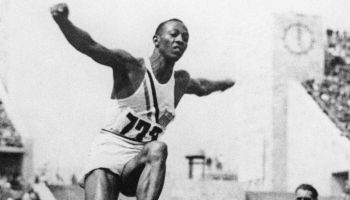Becoming physically active in middle age, even if someone has been inactive for years, greatly reduces the risk that that they will become seriously ill or physically disabled in retirement, the New York Times reports.
Citing a large-scale study published last fall that looked at more than 12,000 Australian men aged between 65 and 83, the Times reports that those who participated in about 30 minutes of exercise up to five times per week were much healthier and less likely to die 11 years after the start of the project than those who were inactive, even when adjustments were made for smoking, education, body mass index and other issues.
While it is unclear just how many Blacks participated in the study, the findings could be good news for African Americans because it means it’s never too late to become active. When leisure-time physical activity is considered by a single race and ethnicity, White adults were more likely to have met the full guidelines for both aerobic and muscle-strengthening activity based on their participation in leisure-time physical activity than Black or Hispanic adults, according to a national survey conducted in 2011 by the U.S. Department of Health and Human Services, the Centers of Disease Control and Prevention and the National Center for Health Statistics that was released in December 2012.
The Times reports that it’s unclear whether exercise habits need to have been established and maintained throughout adulthood to affect aging. It raises the question: “If someone has slacked off on his or her exercise resolutions during young adulthood and early middle-age, in other words, is it too late to start exercising and still have a meaningful impact on health and longevity in later life?”
The study, which appears in the February issue of the British Journal of Sports Medicine, scientists separated responses from 3,454 healthy, disease-free British men and women aged between 55 and 73 who, upon joining the original study of aging, had provided clear details about their exercise habits, as well as their health, and who then had repeated that information after an additional eight years, the Times reports.
The Times reports:
In the eight years between the study’s start and end, the data showed, those respondents who had been and remained physically active aged most successfully, with the lowest incidence of major chronic diseases, memory loss and physical disability. But those people who became active in middle-age after having been sedentary in prior years, about 9 percent of the total, aged almost as successfully. These late-in-life exercisers had about a seven-fold reduction in their risk of becoming ill or infirm after eight years compared with those who became or remained sedentary, even when the researchers took into account smoking, wealth and other factors.
The results bolsters other findings and confirms common sense. A noteworthy 2009 study of more than 2,000 middle-aged men, the Times reports, for example, found that those who began exercising after the age of 50 were far less likely to die during the next 35 years than those who were and remained inactive. “The reduction in mortality associated with increased physical activity was similar to that associated with smoking cessation,” the researchers concluded, according to the Times.
Formal exercise is not always a measure of being active. Adding an hour per week of “gardening, cleaning the car, walking at a moderate pace, or dancing” counted, Mark Hamer, a researcher at University College London who led the study, told the Times.
So get moving!
















